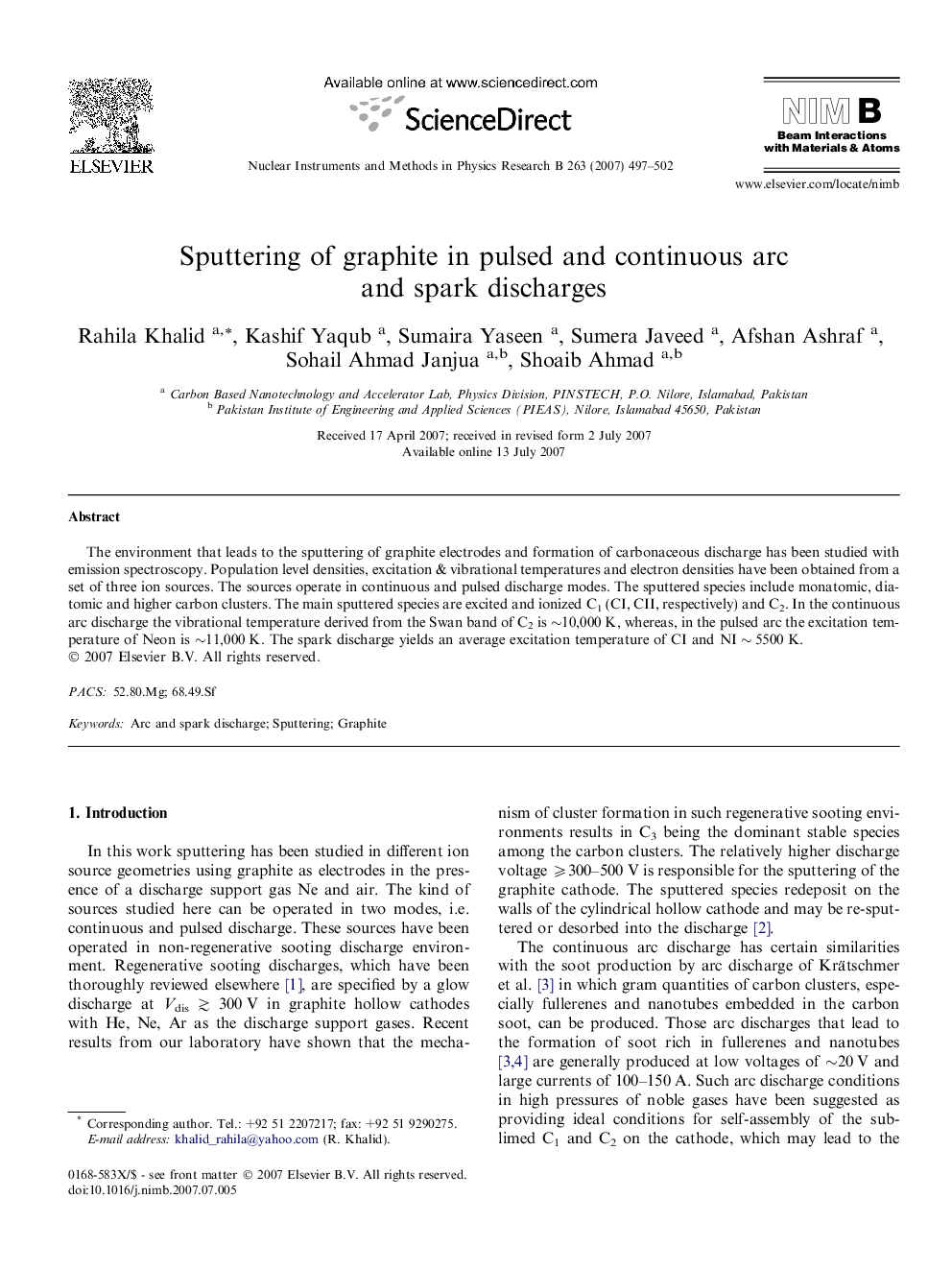| Article ID | Journal | Published Year | Pages | File Type |
|---|---|---|---|---|
| 1686578 | Nuclear Instruments and Methods in Physics Research Section B: Beam Interactions with Materials and Atoms | 2007 | 6 Pages |
Abstract
The environment that leads to the sputtering of graphite electrodes and formation of carbonaceous discharge has been studied with emission spectroscopy. Population level densities, excitation & vibrational temperatures and electron densities have been obtained from a set of three ion sources. The sources operate in continuous and pulsed discharge modes. The sputtered species include monatomic, diatomic and higher carbon clusters. The main sputtered species are excited and ionized C1 (CI, CII, respectively) and C2. In the continuous arc discharge the vibrational temperature derived from the Swan band of C2 is â¼10,000 K, whereas, in the pulsed arc the excitation temperature of Neon is â¼11,000 K. The spark discharge yields an average excitation temperature of CI and NI â¼Â 5500 K.
Keywords
Related Topics
Physical Sciences and Engineering
Materials Science
Surfaces, Coatings and Films
Authors
Rahila Khalid, Kashif Yaqub, Sumaira Yaseen, Sumera Javeed, Afshan Ashraf, Sohail Ahmad Janjua, Shoaib Ahmad,
